Related Research Articles
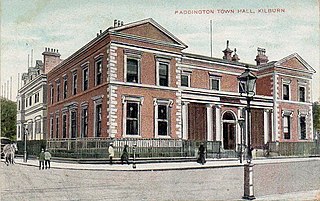
Paddington was a civil parish and metropolitan borough in London, England. It was an ancient parish in the county of Middlesex, governed by an administrative vestry. The parish was included in the area of responsibility of the Metropolitan Board of Works in 1855 and became part of the County of London in 1889. The parish of Paddington became a metropolitan borough in 1900, following the London Government Act 1899, with the parish vestry replaced by a borough council. In 1965 the borough was abolished and its former area became part of the City of Westminster in Greater London.

Leicester South is a constituency, recreated in 1974, represented in the House of Commons of the UK Parliament since 2011 by Jonathan Ashworth of the Labour Co-op Party. A previous version of the seat existed between 1918 and 1950. Except for a 2004 by-election when it was won by the Liberal Democrats, Leicester South has been held by the Labour Party since 1987.
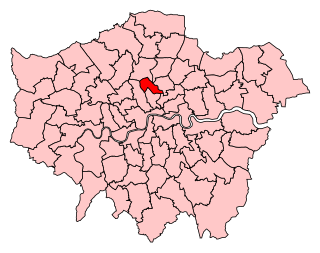
Islington North is a constituency in Greater London represented in the House of Commons of the UK Parliament since 1983 by Jeremy Corbyn. He served as Leader of the Labour Party and Leader of Her Majesty's Opposition from 2015 to 2020. Corbyn had the whip removed on 29 October 2020 and has subsequently sat as an Independent. He was readmitted to the Labour Party on 17 November 2020, but the whip has not been restored. The constituency was established for the 1885 general election.

Scarborough and Whitby is a constituency represented in the House of Commons of the UK Parliament since 2005 by Robert Goodwill, a Conservative.
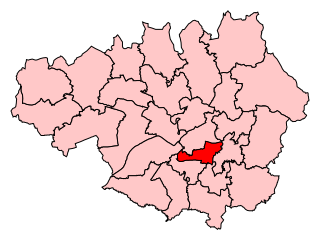
Manchester Gorton is a constituency represented in the House of Commons of the UK Parliament by Labour's Afzal Khan, who was elected at the 2017 general election. It is the safest Labour seat in Greater Manchester by numerical majority and one of the safest in the country.

Stalybridge and Hyde is a constituency represented in the House of Commons of the UK Parliament since 2010 by Jonathan Reynolds, a member of Labour Co-op.

Cities of London and Westminster is a constituency returning a single Member of Parliament (MP) to the House of Commons in the United Kingdom Parliament. It is a borough constituency for the purposes of election expenses and type of returning officer. As with all constituencies, the election is decided using the first past the post system of election. Since its creation at the 1950 general election, the constituency has always elected the candidate nominated by the Conservative Party.

Bristol West is a borough constituency represented in the House of Commons of the Parliament of the United Kingdom since 2015 by Thangam Debbonaire of the Labour Party. It mostly covers the central and western parts of Bristol.
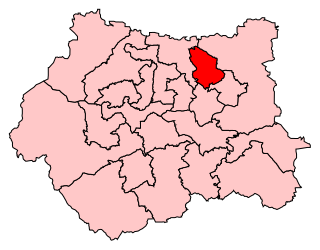
Leeds North East is a constituency which has been represented in the House of Commons of the UK Parliament since 1997 by Fabian Hamilton of the Labour Party.
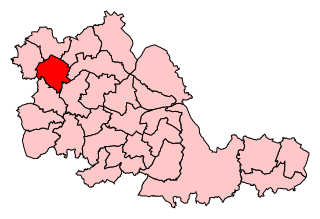
Wolverhampton South East is a borough constituency represented in the House of Commons of the Parliament of the United Kingdom. It elects one Member of Parliament (MP) by the first past the post system of election.

Bournemouth West is a parliamentary constituency represented in the House of Commons of the UK Parliament since 2010 by Conor Burns, a Conservative.

Kingswood is a constituency represented in the House of Commons of the UK Parliament since 2010 by Chris Skidmore, a Conservative.

Hackney South and Shoreditch is a constituency represented in the House of Commons of the UK Parliament since 2005 by Meg Hillier of the Labour Party and of the Co-operative Party.

Regent's Park and Kensington North was a constituency in Central and West London represented in the House of Commons of the Parliament of the United Kingdom. It elected one Member of Parliament (MP) by the first past the post system of election.
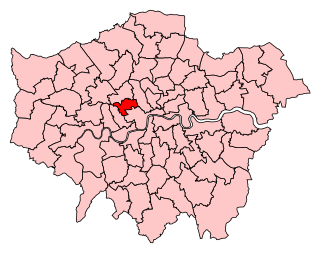
Westminster North is a constituency represented in the House of Commons of the UK Parliament since its 2010 recreation by Karen Buck, a member of the Labour Party. Its previous 1983 to 1997 existence is also covered by this article.

Lewisham West and Penge is a constituency in Greater London created in 2010 and represented in the House of Commons of the UK Parliament since 2017 by Ellie Reeves of the Labour Party.
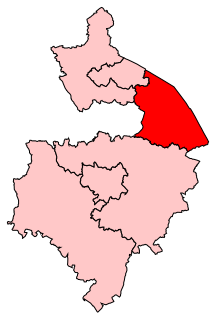
Rugby is a constituency represented in the House of Commons of the UK Parliament since its 2010 recreation by Mark Pawsey, a Conservative.

Hampstead and Kilburn is a constituency created in 2010 and currently represented in the House of Commons by Tulip Siddiq of the Labour Party. Glenda Jackson was the MP from 2010 to 2015, having served for the predecessor seat since 1992.
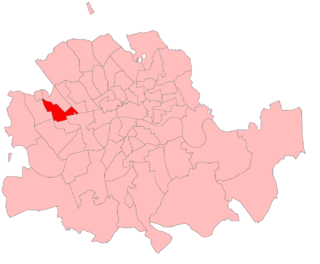
Paddington South was a Parliamentary constituency in London which returned one Member of Parliament. It was a compact urban area, but predominantly wealthy, and was most famously represented by Lord Randolph Churchill during the latter part of his career.

Paddington North was a borough constituency in the Metropolitan Borough of Paddington in London which returned one Member of Parliament (MP) to the House of Commons of the Parliament of the United Kingdom, elected by the first past the post voting system. It was created in 1885, and abolished for the February 1974 general election.
References
- ↑ "'Paddington', Feb 1974 - May 1983". ElectionWeb Project. Cognitive Computing Limited. Retrieved 21 March 2016.
- ↑ "Initial Report of the Boundary Commission for England", Cmd. 7260, p. 33.
- ↑ "Constituency Changes", The Times, 19 March 1948, p. 4.
- ↑ "Boundary Commission for England", Second Periodical Report, Cmnd. 4084, p. 26-27.
- ↑ "Boundary Commission for England", Second Periodical Report, Cmnd. 4084, p. 96.
- ↑ Michael Horsnell, "Two sitting members woo millionaires and council tenants", The Times, 12 February 1974, p. 5.
- ↑ "Fight for the 39 vital marginals: Part 1 Paddington", The Times, 23 September 1974, p. 4.
- ↑ "The Political Companion" No. 24 (Summer/Autumn 1976) edited by F.W.S. Craig and E.P. Craig, Parliamentary Research Services, Chichester, 1976, p. 95.
- ↑ "Capital movements could make a little swing a big dipper", The Guardian, 10 April 1979, p. 4.
- ↑ "Where hunt the voter is the name of the game", The Guardian, 19 April 1979, p. 6.
- ↑ Richard Norton-Taylor, "London goes Tory on 8 per cent swing", The Guardian, 4 May 1979, p. 32.
- ↑ "Ballot forgery scare", The Guardian, 5 May 1979, p. 3.
- ↑ "Boundary Commission for England", Third Periodical Report, Cmnd. 8797-I, p. 37-8.
- ↑ "Boundary Commission for England Initial Proposals Paddington BC" (PDF). Parliamentary Boundary Commission for England. Retrieved 20 October 2012.